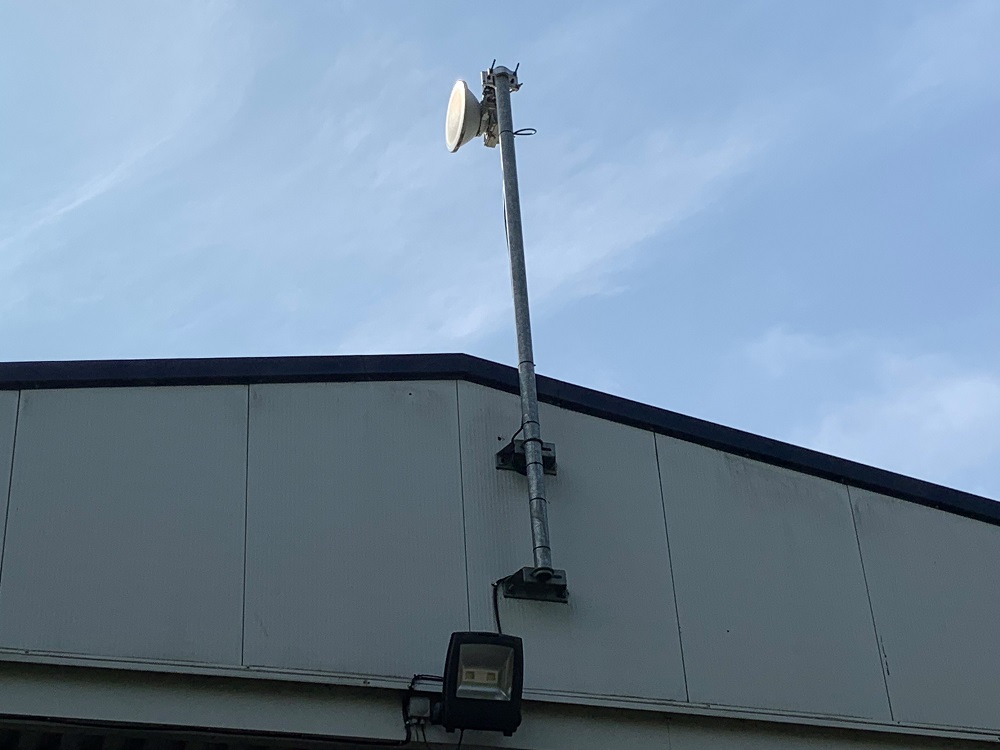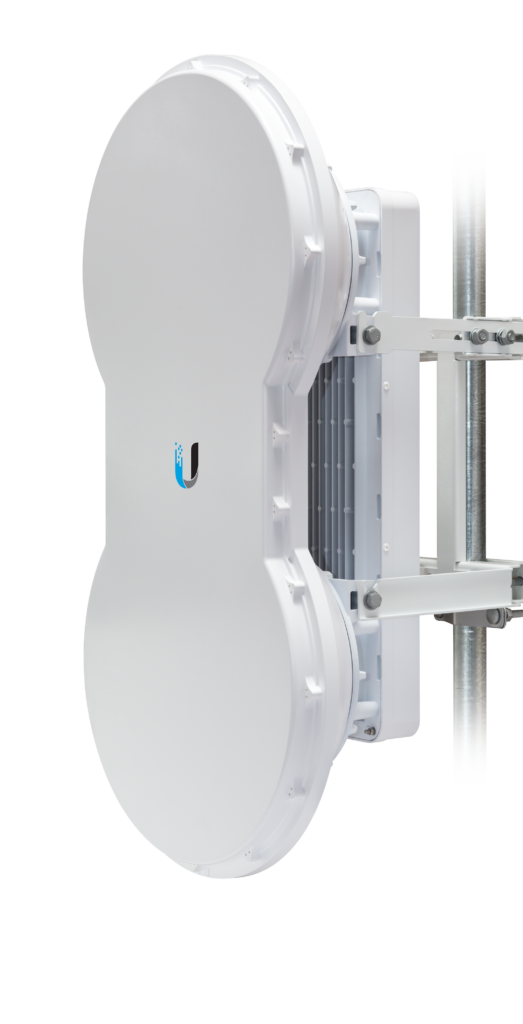Wireless bridges are widely used these days in telecommunications, but many don’t know what a wireless bridge is. I’ve written this blog post to explain what a wireless bridge is without any technical jargon.
What is a wireless bridge? A wireless bridge is a connection between two networks, which are usually a great distance apart. Once joined by the wireless bridge, the networks essentially act as one network.
In this blog post, I’ll give you a much greater idea of what a wireless bridge is by discussing some examples and explaining how it all works.
How Does A Wireless Bridge Work?
In most deployments, a wireless bridge is used to connect two networks so all the devices within both networks can ‘talk’. You must not confuse a wireless bridge with a wireless repeater, which is a device purely used to extend the range of your Wi-Fi. Instead, a wireless bridge is typically utilised to connect two complete networks that are a great distance apart. For example, separate networks in adjacent buildings.
In this context, a wireless bridge is created by fitting point-to-point wireless gear to both buildings. In most commercial deployments, bidirectional antennas will be fitted to your two properties. Both antennas will be physically wired into your network on both ends. Generally, this is done with ethernet cables. Data can be transmitted wirelessly using microwaves between the two antennas and thus the wireless bridge is created.

A wireless bridge such as this has many uses. The main reason you’d create a bridge like this would be to share a connection between two of your buildings. If you get a superfast connection into one of your buildings, you can share it between both of them with a wireless bridge. This saves on the expense of having to install another connection in your second property, especially if they are close together. Secondly, you could create a wireless bridge to create one big network without the expense of physically linking the two buildings together with cabling.

What Equipment Is Needed To Create A Wireless Bridge?
To create the wireless bridge that will allow two buildings to share the same network and perhaps connection, you will need a range of equipment. I’ll tell you everything that you need here.
Bidirectional Radios
First and foremost, you will need two radios. One radio will be fitted to each building. Depending on what you want the radios for, you will want to choose radios capable of transferring data at superfast rates.
Whenever I have worked on a project in the past, we have always used Ubiquiti technology. Ubiquiti is the leading manufacturer of wireless data communications products in the world and if you use their products you will find a nice ecosystem that makes managing your network and technology easier than ever. This is why I would recommend using Ubiquiti products for your wireless link.

Ubiquiti have a range of outdoor radios designed to perform optimally regardless of interference. As their radios are actually designed for outdoor use, you can expect excellent performance and exceptional data transfer rates. For instance, the Ubiquiti AirFiber Outdoor 5GHz delivers throughput of up to 1.2Gbps. The AirFiber Outdoor range is robust, designed to operate in harsh RF noise environments. Depending on where your two buildings are this could be a key benefit of this technology.
Modems
Additionally, you will need two modems: one at either end of the connection.
A modem is a device that coverts a signal into data and vice versa. The modem will typically plug into the connection coming into your building. In this context, the cable carrying the microwave signals will plug into the modems in each building. The modems will both modulate and demodulate data, transforming the microwaves into data that the devices in your buildings can use.
Modems are often combined with routers, so you may not need two devices. Instead, you can purchase a router that is a combination of a router and a modem.
Routers
A router is an essential piece of networking equipment and you will need a router on both sides of the wireless link.
A router is a device that routes data on a network. It sends data to all the devices connected to it. For example, the router will send data to your laptop, giving it an internet connection and linking it up with the other devices also connected to the router.

If you’re using a separate router and modem, the router plugs into the modem. These devices ‘talk’ to each other, exchanging networking traffic. The router distributes the data among the devices connected to it either wired or wirelessly.
Depending on the number of devices that you have, you might need to purchase a switch. A switch is an essential network component for most businesses, so I’ll explain what that is next and why you might need one.
Switch
A switch is an essential piece of hardware in any business network. A network switch is a piece of hardware designed to connect devices on a network and forward data. The main purpose of a basic switch is to give your business more ethernet ports to plug devices into.
A router has a very limited number of ports for your devices. A switch offers a way to expand on the number of ports you have, which is why it’s a vital part of a business network.
Most switches are intelligent enough to transmit network packets to only the devices for which they are intended. A drawback of an Ethernet hub is that it sends the data packet to every single port. A network switch can distinguish the packet’s intended destination and therefore only transmit the packet to that port.
Many modern switches also implement PoE (Power over Ethernet). Attached devices can be powered solely by the Ethernet cable, rather than having a separate power supply. In an office environment, the network’s easier to manage and maintain when PoE devices are used in coordination with a switch implementing PoE.
That covers all the equipment that you’ll need to create a wireless bridge. Let’s explore some of the benefits of creating a wireless bridge.
Benefits Of Creating A Wireless Bridge
There are countless situations where a wireless bridge deployment could be beneficial to a business. Here are some of the advantages of creating a wireless bridge.
- Inexpensively expand your network: If you need to expand your network or share your internet connection with another building, a wireless bridge is an inexpensive way to do so. Running Ethernet between the two buildings can be expensive or potentially impossible, so creating a wireless bridge is often a much cheaper option.
- No construction works required for installation: To create a physical connection between buildings, you’ll likely require planning permission and building works depending on your location. To create a wireless bridge, no construction work is required. As long as you have line of sight, you can connect the two buildings by mounting bidirectional antennas on both.
- High-speed data transfer rates: As I stated earlier in this blog post, the technology used to create wireless bridges can transfer data at an incredibly fast rate. For instance, the Ubiquiti AirFiber Outdoor 5GHz delivers throughput of up to 1.2Gbps.
So that’s a few of the main benefits of creating a wireless bridge. Hopefully this blog post has helped you to learn more about wireless bridges and how one could be of benefit to your business.
I hope that you’ve enjoyed reading this post. What do you think to wireless bridges? Are you wanting to create one for your business? Leave a comment below with your thoughts!
